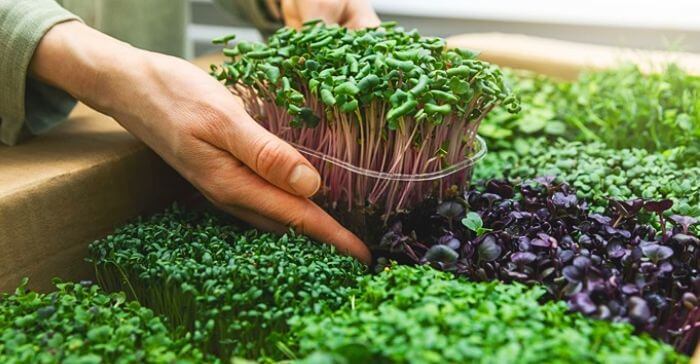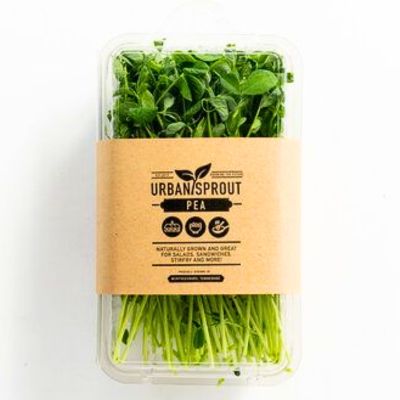Microgreen Farm: Starting Your Own Microgreen Business
Are you looking to start a business that aligns with your passion for healthy and sustainable food? Then consider starting a microgreens farm! Microgreens are young, tender seedlings that pack a punch of flavor and nutrition. They’re easy to grow, have a quick harvest time, and are in high demand by consumers and restaurants alike. In this blog, we’ll dive into the world of microgreen farm and show about starting your own Microgreen Business.
What are Microgreens?
Microgreens are young plants that are harvested when they’re still very small, typically within a few weeks of germination. They’re called “micro” because they’re much smaller than mature plants, but they pack a powerful punch of flavor and nutrition. These tiny greens are often used as a garnish or to add flavor and texture to dishes like salads, sandwiches, and soups. They’re also incredibly easy to grow at home, even if you don’t have much space. Some of the most popular microgreens include broccoli, kale, radish, and arugula.
Advantages of Starting a Microgreens Business
Starting a microgreens business has a number of advantages, including:
Low start-up costs: Microgreens can be grown in small spaces using basic equipment, making it a low-cost business to start.
High profit margins: Microgreens can be sold for a premium price, due to their high nutrient content and versatility in cooking.
Local and sustainable: Microgreen farms are typically small, local operations that use sustainable growing methods, which is a growing trend in the food industry.
Health and wellness: Microgreens are a healthy, plant-based food that is in high demand among consumers who are focused on their health and wellness.
Getting Started with Your Microgreen Business

Step 1: Choose Your Microgreens
The first step in starting a microgreens business or microgreen farm is to decide which microgreens you want to grow. Consider your local climate, the available growing space, and your personal interests and preferences. Some of the most popular microgreens include:
- Kale
- Radish
- Arugula
- Broccoli
- Beet
Step 2: Design Your Growing Space
Once you have chosen your microgreens, you need to design your growing space. This can be a simple setup in your home, a dedicated room in your garage, or a larger greenhouse. When designing your growing space, consider the following:
Lighting: Microgreens need bright, indirect light to grow, so choose a location that gets plenty of natural light or invest in grow lights.
Ventilation: Good ventilation is important to prevent mold and disease, so make sure your growing space has good air flow.
Temperature: Microgreens prefer temperatures between 60-70°F, so make sure your growing space can maintain these temperatures.
Step 3: Purchase Equipment and Supplies
To grow your microgreens, you’ll need the following equipment and supplies:
Seeds: Choose high-quality seeds from a reputable supplier.
Growing trays: Choose trays that are at least 2 inches deep and have holes for drainage.
Growing medium: Use a soilless mixture, such as peat moss or coconut coir, as your growing medium.
Watering system: Choose a watering system that will keep your growing medium evenly moist without drowning your seeds.
Step 4: Start Growing
Once you have your equipment and supplies in place, it’s time to start growing your microgreens. Here’s a basic overview of the growing process:
- Fill your growing trays with your growing medium and moisten it.
- Sprinkle your seeds evenly over the surface of the growing medium.
- Cover the seeds with a light layer of growing medium.
- Place the trays in your growing space and provide bright, indirect light.
- Water the seeds regularly, being careful not to overwater.
- Harvest your microgreens when they are 1-3 inches tall, usually within 7-14 days of planting.
- Marketing and Selling Your Microgreens
Step 5: Branding and Packaging

Create a strong brand for your microgreen business that showcases your commitment to healthy, sustainable, and local food. Choose a memorable name, develop a logo, and create a website and social media presence. Choose attractive, eye-catching packaging for your microgreens that will help them stand out on store shelves or at farmers markets. Consider using clear packaging that showcases the quality and freshness of your greens.
Step 7: Sales Channels
There are a variety of sales channels for microgreens, including:
Farmers markets: Sell your microgreens directly to consumers at local farmers markets.
Wholesale: Sell your microgreens to local restaurants, cafes, and grocery stores.
Online: Sell your microgreens online, either through your own website or through a marketplace like Etsy or Amazon.
Step 8: Marketing and Promotion
Use a combination of online and offline marketing and promotion to build awareness of your microgreen business. Consider offering samples at farmers markets, hosting events, and using social media to reach potential customers.

Conclusion
In conclusion, starting a microgreens business or microgreen farm is a smart investment that can bring you both financial and personal satisfaction. The growing demand for healthy, sustainable, and local food has created a thriving market for microgreens, and with the right marketing and branding strategy, you can reach your target audience and grow your business.
We hope that this blog has inspired you to start your own microgreen business. With a little bit of hard work and dedication, you can turn your passion into a profitable and fulfilling venture. Good luck!
To read more about such informative articles click on to
Business Trends 2021 Everyone Must Know to Boost Your Business
How to Start a Small Business from Home – Top 7 Most Successful Home Based Businesses


